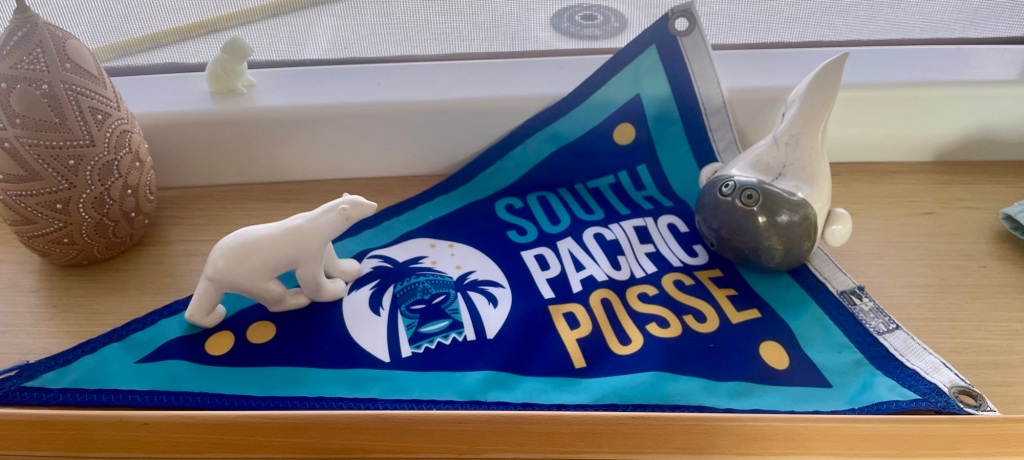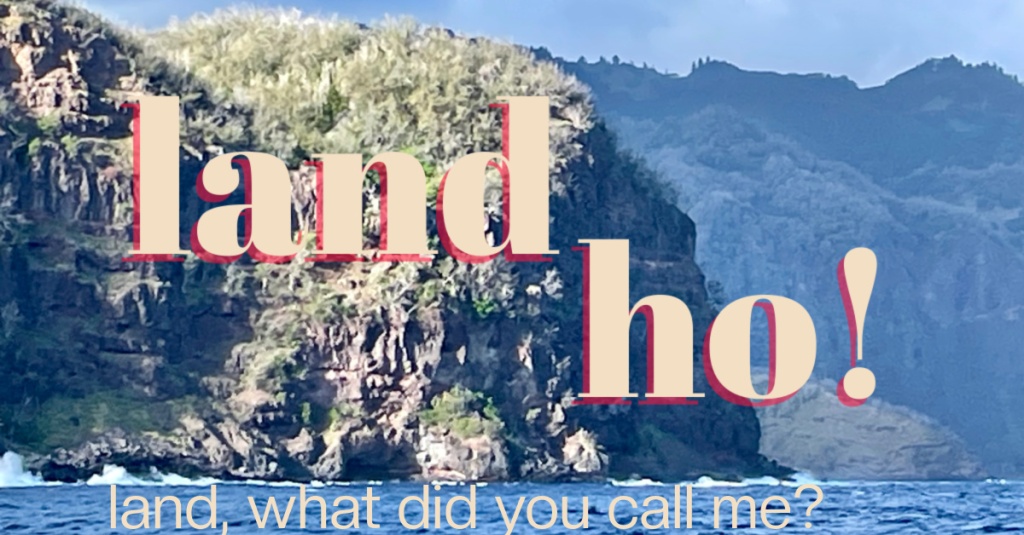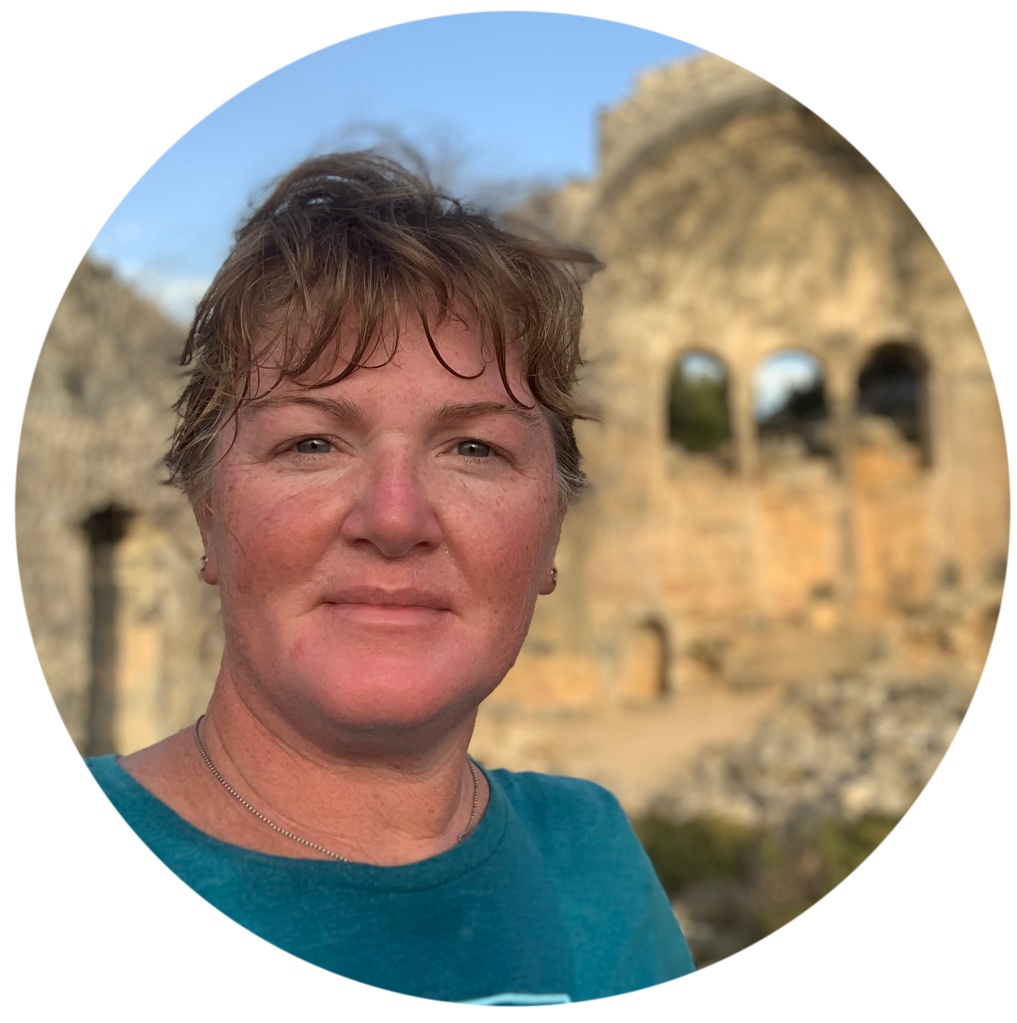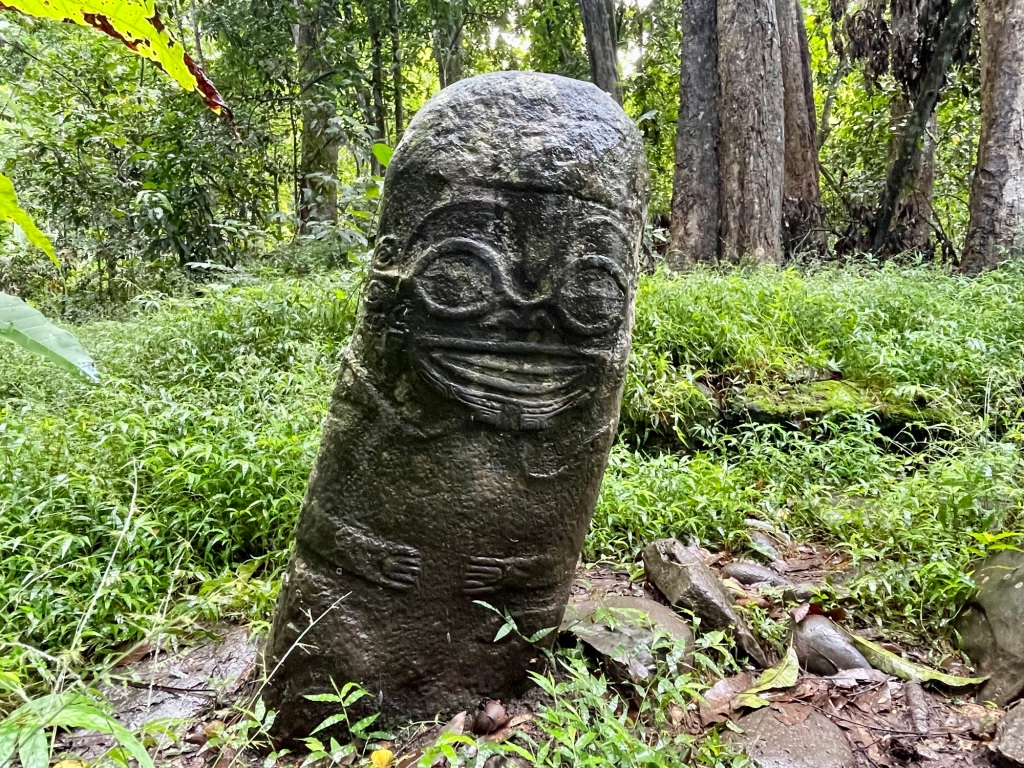Atouna, Hiva Oa, Marquesas, French Polynesia
Our Raymarine chart plotter informs us how many nautical miles (nm) are left to go to our set terminating waypoint. Mark calculated how many nautical miles we sailed every 24 hour period recording location, average wind speed, and average sea state. From the distance to go and forcasted weather we can determine the Time of Arrival.
We have to take into consideration that arriving at night to a new harbour is not a wise choice as you cannot see with the naked eye any obstacles that are present. It is also unwise to come in early morning or early evening because the angle of the sun is not going to make visable any sub-surface obstacles, like reefs or sunken ships. While a sailor may wish that modern chart plotters alerted us to these obstacles, we have found this not to be the case. So what that leaves is an arrival window between 9am and 3pm, or three hours after sunrise and three hours before sunset.
Day 20 is when we started to calculate potential landfall with predicted weather. With the journey average of 5.7 knots (kts) we were calculating landfall at 8pm. Er, nope. Not good. With the wind behaving well today, we chose to leave the spinnaker up all night and enjoy a faster sail covering more distance. What it does is run the risk of running into a squall (an adverse weather condition that sucks all the wind into itself, dumps rain in buckets, and then leaves you with no wind on the other side). This is not spinnaker sailing when you are dodging squalls. As the weather was predicted to be favorable, with no squall activity, we left the spinnaker up. Which meant night watches were more vigilant on monitoring the radar, donning our lifevests, and sitting outside at the helm station frequently thoughout each 3 hour shift. We did not have any squalls that would have necessitated an immediate sail change resulting in the person on shift having to wake the person off shift to assist in dousing the sail. Running the spinnaker gave us an extra 2kts per hour over the course of the night shift. So 12 hours times +2 kts extra is 24 miles more in that 12 hour period. At almost 6 nm/h we shaved 4 hours off our time. Making an expected 8pm landfall now result in a 4pm landfall. If all conditions stay ideal.
Day 21 we watched the weather like hawks. And everything was clear sailing until just before dinner when the wind died. We are sailing along, running the spinnaker and it starts to luft (fill in, then collapse, then fill in, then collapse). So we put dinner on hold and changed to the night sail pattern of the main at the first reef and the genoa barberhauled (tied down as not to move). Not upsetting. This is what we do every night. No need to watch vigilantly on the radar. Just look around for boats without AIS (automatic identification system) so we don’t run into anything not transmitting vessel data. Didn’t see anything all night. Off shift sailor can rest knowing there will most likely not be any issues and can relax the mind to get as much deep sleep as three hours would allow.
This is all well and good, but just past midnight, all wind died. Not a whisper of wind. Boat does not move. Because there isn’t any propultion from the sails, the navigation system has no ability to control the direction of the boat. We are adrift. The navigation system does not like NOT being in control so it chooses to blare the alarms at deafening levels. So I have a choice: turn the navigation system off or turn on the engines. Every hour we make less than our average distance, pushes us to a later and later arrival time. I start the engines. Motor sailing is not ideal at night. It is loud and it is not as comfortable as sailing. But a sailor gotta do, what a sailor gotta do.
Day 22 and we can feel it coming to an end. There really isn’t anything routine about this day. I can’t concentrate to knit. I don’t feel like reading. I just sit and fidget. We are going to make landfall tomorrow. I go out and check the anchor. Mark notices that the chain attached to the swivel has some corrosion so he gets out the hacksaw and takes off a couple links and re-attaches it. He’s fidgety too. There is just a feeling that three weeks have gone by and now the journey is coming to its conclusion. But it isn’t here yet. It isn’t going to be here today. Today we wait. There isn’t anything to do but watch the wind, and the waves, and the forecast, and the sea state and each other. Who wants to make dinner? meh. Not me. Not Mark. We settle on snacking.
Day 23 is the final day. It is going to be a partial day. Marquesas time is GMT-9:30 and we are on ship time of PST of GMT-8. So our 4pm arrival time is now 2:30pm. Perfect time to come in. Absolutely perfect. Spot on. Bravo. We congratulate ourselves cause we’re awesome. [you see where this is going, right?]

The only thing that is keeping me sane is that today is Eclipse Day. We are expected to be at 80% max coverage at 6:42am. (which is 8:12am ships time, so Mark is just waking up). If it weren’t for the eclipse, I’d be pulling my hair out. Not having Amazon drone-drop shipping available to the boat in the South Pacific, we had to do the “pin hole” method where we poke a hole in a piece of paper and watch the shadow of the eclipse. It still kept me occupied, so I am grateful for the distraction. An hour later and we can SEE LAND! An hour after that and the camera can photograph land.

Can you see it? It is just underneath the clouds on the far right. I get to stare at it for the next six hours.
Another boat that took a more southerly crossing is coming in at the same time. There is an unwritten courtesy that if you are coming into an anchorage and someone is even just a little bit in front of you, that you don’t punch it to cut them off to get into the harbor first. Don’t be a jack ass. If you do that, know that I am not-silently judging you. It is the same as coming into a parking spot in the grocery store. You punch it to get into the spot that someone else was clearly lining up to take, you’re the asshole. So, not being un-seaman-ly, we slipped in behind them. Well, a boat comes blaring in from the northern island of Tahuata which is only 8 miles north, sails down, engines gunning and heads into the harbor for an anchor spot. Thirty minutes after that, a second boat is going to repeat the process. We’re losing patience with the boat in front of us. We start our engines to verify everything is ship-shape for getting into the bay to drop anchor. This boat in front? Jeez, get a move on!
And then the starboard (right) engine alarms and cuts off. Mark checks the fuel. Fuels good. Mark checks the strainers. Strainers empty. Mark checks the voltage. All systems a-okay. After assuring that things look good, we restart the engine with no issues and catch back up the boat we were following in. Fortunately, they stopped outside the bay to drop their sails. We dropped our sails when the engine restarted so we gratiously slip into the anchorage without losing face.

4:14 pm local time, Monday, April 8th, 2024 and the anchor is dropped. We are firmly anchored in the Marquesas Islands. 22 days and 8 hours. 3,047 nautical miles sailed.






Leave a comment